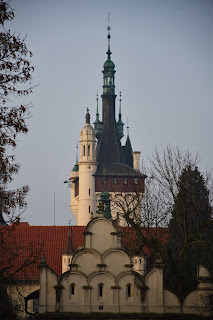Tamsui
The end of
the week was quite eventful. Frances, our resident Yale alumni organiser,
planned a Valentine’s – or rather Friendentine’s – evening at KTV, which was
well attended. My un-transposed renditions of Teresa Teng were, if I may say so
myself, a source of general wonderment, though I really ought to practice my
upper range better if I am to join the Russian Chorus on its next gig.
I was
thinking about hopping on the train in the morning and heading to Jilong, but
it was already so late by the time I headed back from KTV that I did not think
I would wake up early enough to make the best of my day there. Instead, I
decided I would take the metro up to Tamsui for a half-day trip.
Tamsui is
one of the most historical places in northern Taiwan, its first settlement by non-indigenous
people dating back to the seventeenth century, when the Spanish expanded their
dominion there from Jilong. Santo Domingo, the fort they built in Tamsui, was
later taken over by the Dutch and subsequently by the Qing. In the nineteenth
century, it served as the British consulate, and it is this later history that
the current museum aims to emulate.
First
things first though. The Tamsui station is the last station on the very long
red line. It is honestly quite amazing that as distant a place as Tamsui,
almost an hour away from the metro station closest to where I live, is still
serviced by the same metro line. Right outside the station is a park and a very
pleasant seafront with beautiful views of Guanyin mountain across a short
stretch of sea. It was still quite early, around nine o’clock or nine thirty,
when I arrived, so the waterfront was completely abandoned. The same was not
true, however, of the market streets, which were bustling with life as local
residents haggled over vegetables and various seafood for their weekend
cooking.
I saw
several traditional Chinese temples, after which I continued to the part of the
city I had read so much about: Mackay Street, named in honour of the Canadian
missionary, and the site of one of the oldest hospital buildings on the island.
As I discovered, the street branches out from a small plaza with a bust of George
Mackay, and continues to a red brick European-style church. From there, it was
not far to the Tamsui Customs Wharf, and then to Fort Santo Domingo. With a
visit to the nearby Aletheia University, I had checked off all items on my
itinerary. The university was in fact founded as Oxford College in honour of
Mackay’s home county in Canada, which had raised over six thousand dollars for
the purpose of establishing an institution of higher learning in Taiwan.
Founded by the missionary himself, it is the oldest university in Taiwan.
Tamsui seafront and Guanyin Mountain
Colourful incinerator building
Inside the Tamsui Longshan Temple
The Tamsui Fishball Museum
An idol at the Tamsui Fuyou Temple
A bust of George Leslie Mackay
Mackay Street
The plaque outside the Tamsui Presbyterian Church, featuring Mackay's beloved image of the burning bush
Tamsui Presbyterian Church
Another view of the Tamsui Presbyterian Church
Guanyin Mountain
The old customs house
A ship torso at the customs wharf
Fort Santo Domingo
The outside area in Fort Santo Domingo where prisoners were allowed to go for recreation
Guanyin Mountain as seen from the British Consulate
Fort Santo Domingo turret
A room at the British Consulate
Plates with floral patterns at the British Consulate
The master bedroom at the British Consulate
The British Consulate's dining room
Outside the British Consulate
Another view of Fort Santo Domingo
The front of the British Consulate
Aletheia University
Aletheia University getting a nice wash
The old Oxford College building
The book selection at the 'Little White House'
The Little White House
Behind the Little White House
Inside the Former Residence of Tamsui Township Head Tade Eikichi


































Comments
Post a Comment